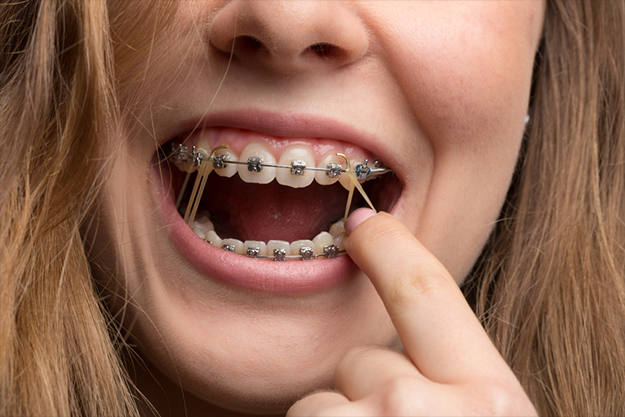If you wear braces or intend to get them in the near future, elastics could be a key part of your orthodontic treatment. Understanding what elastics are and how they’re capable of moving you closer to your treatment goals is important.
What are Elastics?
People who use either Invisalign aligners or braces may need to wear orthodontic elastics as well. Elastics apply additional pressure to improve the bite or move the teeth in a desired direction. With braces, elastics are looped over the small-sized hooks that are on the bottom or top brackets. For aligners, they’re instead connected to the clear buttons that are affixed directly to the teeth.
Why Elastics Are Important?
Everyone’s journey to a healthy, attractive, and ultimately balanced smile is unique. Some patients require elastics when wearing braces or plastic aligners. Some patients do not. The alignment of the jaw is a key factor in determining whether elastics are needed. If they wind up being a necessary part of your treatment, you may need to wear elastic bands for just a few months, or for one full year. Consistently wearing your elastics will keep your orthodontic treatment moving forward.
Elastic Bands and Eating
Elastics should even be worn when you eat. However, with certain foods, keeping your elastics on could prove to be difficult. When absolutely necessary, taking them out for a short span of time is perfectly fine. You just need to remember to put new elastics on once your meal is done.
Different Types of Orthodontic Elastics
Orthodontic elastics are available in several types. These include ligatures and inter-arch elastics. Ligatures are used to keep the archwires securely in place. They are affixed directly onto the brackets of metal braces. Conversely, inter-arch elastics are arranged in strategic patterns between the bottom and top teeth. The goal of inter-arch wires is to improve the alignment of a patient’s bite. Inter-arch elastics come in three different classes. They can be used for closing gaps between the teeth, adjusting the bottom teeth, and correcting an underbite.
How to Use Elastics
To expedite your treatment and ensure an optimum outcome, you should always wear your elastics. During your appointment, we’ll teach you how to put them on, how to remove them, and how to replace them as needed. This might change as your orthodontic treatment progresses, but we’ll make sure that you always feel comfortable. While you might be tempted to speed things up a bit by putting extra elastics on or “doubling up”, this can actually do more harm than good. It can even cause damage to your natural tooth roots. Elastics should never be overstretched, even if they feel too tight to put on. Overstretching elastic bands diminishes their effectiveness.
We will always give you sufficient bands to see you through to your next office visit. However, we certainly understand that elastics can be lost, and that they may even break. You can always come see us to pick up additional elastics when you need them. It’s best to carry your elastics with you at all times so that broken bands can be quickly replaced.


